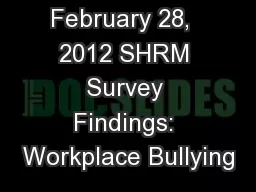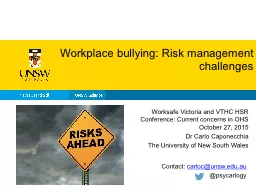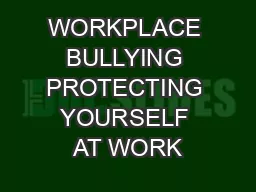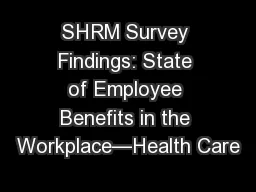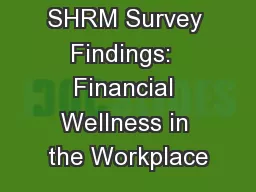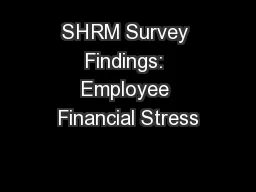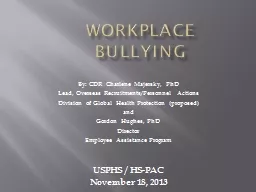PPT-February 28, 2012 SHRM Survey Findings: Workplace Bullying
Author : conchita-marotz | Published Date : 2018-11-02
Definitions 2 Workplace bullying Persistent offensive abusive intimidating or insulting behavior or unfair actions directed at another individual causing the recipient
Presentation Embed Code
Download Presentation
Download Presentation The PPT/PDF document "February 28, 2012 SHRM Survey Findings:..." is the property of its rightful owner. Permission is granted to download and print the materials on this website for personal, non-commercial use only, and to display it on your personal computer provided you do not modify the materials and that you retain all copyright notices contained in the materials. By downloading content from our website, you accept the terms of this agreement.
February 28, 2012 SHRM Survey Findings: Workplace Bullying: Transcript
Download Rules Of Document
"February 28, 2012 SHRM Survey Findings: Workplace Bullying"The content belongs to its owner. You may download and print it for personal use, without modification, and keep all copyright notices. By downloading, you agree to these terms.
Related Documents

